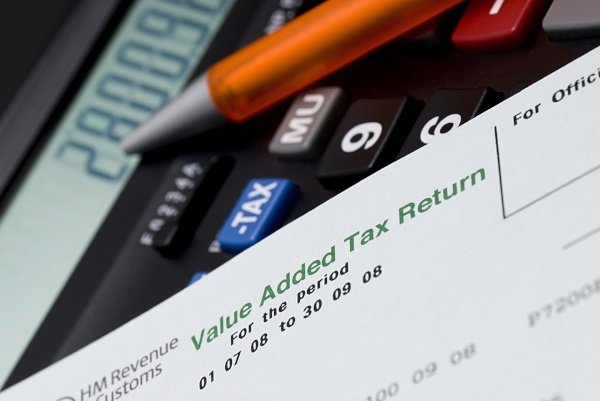Having a large VAT bill that you are finding difficult to pay off isn’t anything new. Thousands of businesses experience this situation every year. You are not alone. But it can still be a pain knowing that settling your VAT bill will severely reduce your cash flow and your bank balance.
However, whatever your situation you must take action. Many companies don’t and get penalised for it. Pleading ignorance of the VAT rules is no defence.
Being unable to pay your VAT bill can be an indication that either your business isn’t performing very well or that you have not put into place a financial strategy to deal with it.
Then you might be equally as likely to be one of the many business people that take unpaid VAT bills in your stride as a regular part of running a business. However, this is often risky, and not without danger. Not being able to raise the funds and losing your business would be one of the bigger risks of such a strategy.
Tax Penalties
Penalties will occur when you fail to complete your VAT returns or don’t pay when it becomes due. There might be reasons for you to incur penalties including:
- Failing to register your business for VAT
- Not having adequate records
- Deliberate fraud or tax evasion.
With your VAT, late payments or filing your return late will be considered by the HMRC as being in default and you will be charged a penalty fee.
However, if you know you won’t be able to pay your tax bill before it’s due then you can mitigate these charges by informing the HMRC and negotiating additional time to pay them.
Have you Registered for VAT?
One of the biggest mistakes a business can make is not actually registering for VAT in the first place. If this is you, then your tax bill really will be a shock when it arrives in the post.
But there are good reasons for not registering. The most common is assuming that your business wouldn’t perform well enough to qualify. But that argument never washes with HMRC and they will calculate your bill, place it in arrears and send you the bill anyway.
You may also have forgotten to deregister for VAT, maybe if you stop trading or making VAT-taxable goods or if your VAT-taxable turnover falls below the £81,000 threshold.
The result is often shock, followed by a big pain in your cash flow.
To avoid these mistakes it’s always best to make sure you register for VAT by visiting the GOV.UK website, creating a Government Gateway Account and submitting your annual VAT return to the HMRC.
Late Payments or VAT Arrears
If you are already late, you will receive a penalty, which will incur additional debt through surcharges. Although these charges may stay on your account (until paid) it’s best to address them immediately so that they don’t get any bigger.
To avoid any further surprises and ever-increasing debt, get in touch with HMRC and discuss the following:
- Reasons for not paying your VAT
- What you can do to pay for it
- How you can make an immediate payment
- Estimate the time frame for paying the balance.
Like any problem, talking about it will relieve both your stress and enable both you and the tax office to work a solution.
Be aware that if you happen to be a sole trader then your VAT debt will also be considered a personal debt and like any personal debt will be subject to potential seizure of assets and/or a winding up petition.
But hopefully you can avoid this, because there are plenty of options you can take before reaching this stage.
Planning To Avoid Costly Tax Bills
STEP 1: Know your VAT requirements
Getting your paperwork correct is the starting point to ensuring there are no nasty VAT surprises come end of year. This includes issuing all the correct VAT invoices and keeping those from suppliers.
Legitimate confusion can come if you have a complicated VAT rules:
- Partial exemptions
- Goods/Services that carry zero VAT
- Company cars and fuel
- Property sales.
If in doubt get the help of your accountant or bookkeeper to ensure you know what your VAT requirements are so that you have a good idea of what the potential costs of them might be.
STEP 2: Calculate your taxes
Calculate what the likely costs for your VAT, income and corporation tax might be. These are the bills that will trip you up if you haven’t been monitoring or saving for them.
If you can, set aside an appropriate amount each month into a business account and keep it separate from your everyday current account. Regular bookkeeping can help you work out your VAT liability enabling you to set aside an appropriate amount every month.
By completing half yearly accounts you can also forecast what level of profit your Corporation Tax is likely to be and start allocating funds for that too. This way you won’t be getting your fingers burnt by being on the wrong side of HMRC when that bill comes through too.
STEP 3: Budget for your VAT bill
No matter what status your business is at, whether you are self employed or running a limited company, the most reliable way to budget for your VAT bill is to predict your end of year sales and purchases. If you constantly review this figure against your profit and loss account you can identify where and how much your tax liability might be.
If you have a regular monthly income, then assign a fixed sum and allocate it for your tax. If you receive irregular sums then it makes sense to assign a percentage of it instead. If you remember that not ALL of your income is YOURS to play with, it might make it easier to put it aside.
STEP 4: Choose the right VAT scheme
Applying for the right VAT payment method for your business can help avoid the pain of surprise bills. HMRC has various schemes available to ensure that you are paying the right VAT for your business:
VAT Cash Accounting Scheme – You pay the VAT on your sales only when your customers pay you. Then you reclaim the VAT on your purchases when you pay your supplier. You can qualify for this scheme if you’re an SME with a turnover of less than £1.35 million.
VAT Annual Accounting Scheme – Instead of making VAT payments based on your VAT invoices, you pay a regular figure based instead on your last return (or estimated if you are new). This means you are making advanced payments prior to submitting your final VAT tax return. After submitting you then either pay the difference between your advance payments and your actual bill or claim a refund for any overpayments. This scheme is also suitable for any business operating a turnover of less than £1.35 million.
VAT Flat Rate Scheme – Uses a fixed rate of VAT payment, usually the difference between the VAT charged by the business and that which it pays on its own purchases. This is for small businesses only with a turnover of less than £150,000.
VAT Retail Schemes – When selling goods that are inclusive of VAT you must deduct the VAT in order to record it. For retailers using a retail scheme can make it easier to calculate; instead of calculating for each sale you can do it once annually with your VAT return. However, you must be prepared to produce an individual VAT invoice if a customer requests one.
While these ways can effectively reduce the risk of an unpleasant shock from the HMRC, even with all the planning in the world the unpredictable will still happen.
Getting Finance to Pay Your VAT Bill
Even businesses that take the time to plan ahead and calculate their VAT bills can still be caught out when the time comes to pay them.
Not having enough working capital is perhaps the biggest problem, many businesses suffer, either seasonally or due to ebbs and flows in their business from periods of reduced cash flow.
The first quarter of the year often arrives with a stack of bills on your accounts desk, some of them will be for tax. For business owners this is a regular, and familiar, experience. For some it can be scary.
Having a bill for thousands of pounds comes with a realisation that there just isn’t enough money in the bank to pay it. And this isn’t always because you have not saved for it. Poor sales or unforeseen costs can often wipe out any money put aside for tax.
But there are still options.
Taking out a Tax Bill Loan
A tax bill loan is really unsecured business loans, they are short-term and aren’t dependent on some sort of collateral being tied to it. They can be spread out over time helping you to stay in control of your cash flow.
Being able to spread the weight of having to pay off a big debt in one go can ease the financial strain on your business and allow you to plan ahead and strategise for the new year with confidence.
There’s nothing more depressing than having to look over your shoulder waiting for your tax debts to catch up with you. Do this and you’ll miss opportunities for growth going forward.
Unsecured business loans help with the payment of:
- Pay tax bill arrears
- Pay for Corporation Tax
- Pay VAT bill
- Get cash flow in order.
There are plenty of positive financial actions you can take to avoid having your business wound up by the HMRC, and there are many ways in which you can finance your VAT bill. From planning ahead and ensuring there is money in the business for tax bills to ensuring there is affordable short-term finance like VAT Loans as solution in place to pay it.
A careful mix of tax planning and ready finance can help any business cope with any short-term financial emergency, cash flow deficit or surprise VAT bill.


